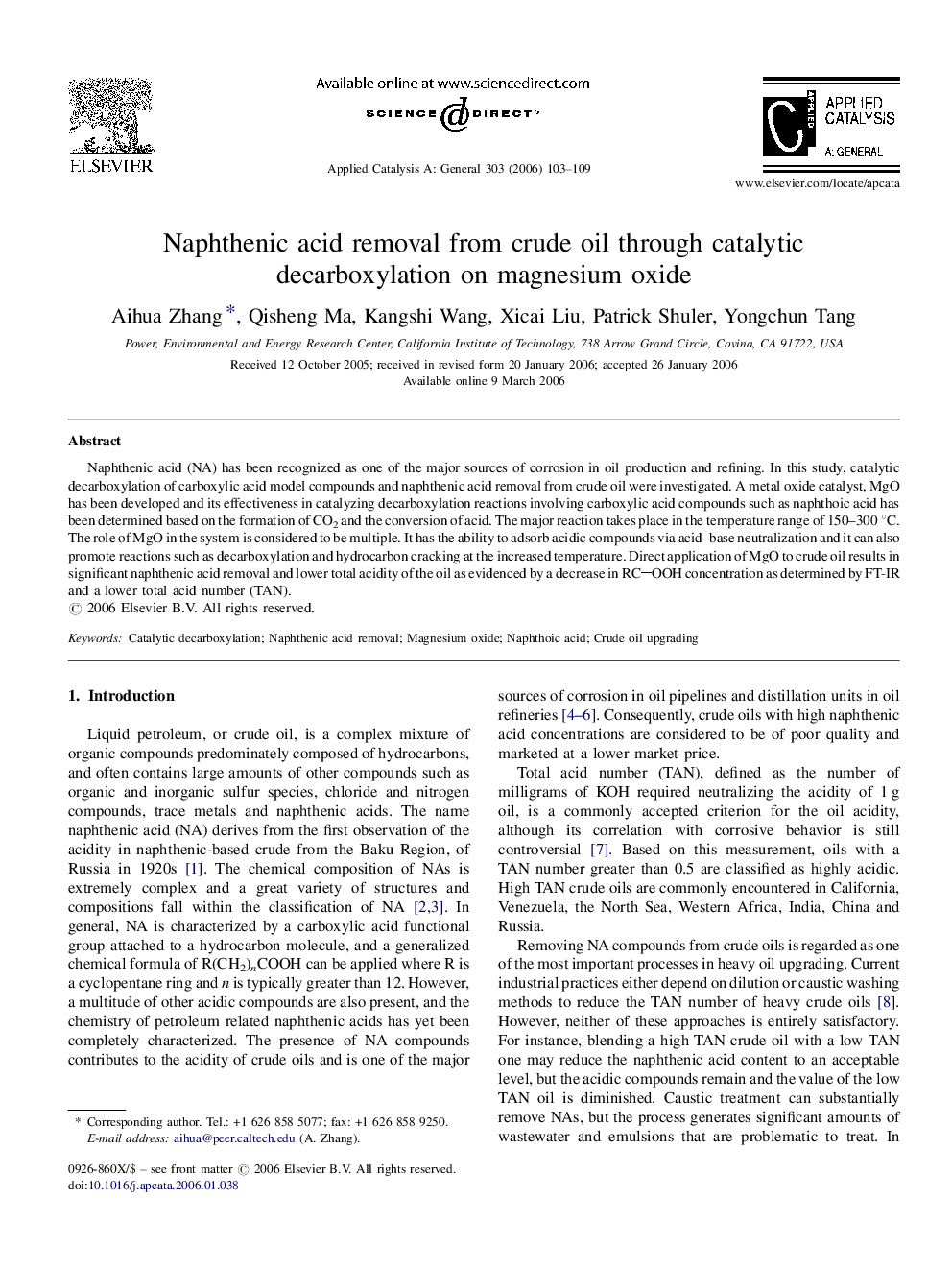| Article ID | Journal | Published Year | Pages | File Type |
|---|---|---|---|---|
| 44537 | Applied Catalysis A: General | 2006 | 7 Pages |
Naphthenic acid (NA) has been recognized as one of the major sources of corrosion in oil production and refining. In this study, catalytic decarboxylation of carboxylic acid model compounds and naphthenic acid removal from crude oil were investigated. A metal oxide catalyst, MgO has been developed and its effectiveness in catalyzing decarboxylation reactions involving carboxylic acid compounds such as naphthoic acid has been determined based on the formation of CO2 and the conversion of acid. The major reaction takes place in the temperature range of 150–300 °C. The role of MgO in the system is considered to be multiple. It has the ability to adsorb acidic compounds via acid–base neutralization and it can also promote reactions such as decarboxylation and hydrocarbon cracking at the increased temperature. Direct application of MgO to crude oil results in significant naphthenic acid removal and lower total acidity of the oil as evidenced by a decrease in RCOOH concentration as determined by FT-IR and a lower total acid number (TAN).
